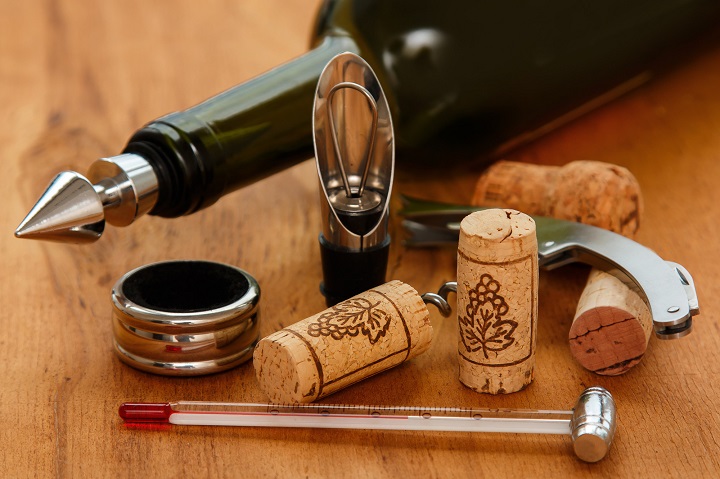Did you know that in 2021, the size of the world market for wine corks was worth USD 5.7 billion?
For many centuries, winemakers have been relying on wine corks to keep their bottles intact. For anyone passionate about fine, premium wine, the quality of the cork used is of paramount consideration.
Knowing the different kinds of cork, and what they add to the winemaking process, is an exercise in perseverance. Read on to understand the five main cork types used to seal wine bottles.
1. Natural Cork
Natural cork closures are traditional and offer a better seal than other alternatives. Natural corks are harvested from the cork oak tree that grows in Spain and Portugal and may carry some residual cork taint. To avoid this, a wine enthusiast must ensure the cork is harvested, stored, and washed correctly.
Natural corks can last long and are ideal for aging wines because they are breathable. The natural cork closure is essential to a wine enthusiast because it allows the wine to evolve in the bottle, developing and improving flavor and body.
Natural corks can last up to a few years, and some even up to several decades. A few drawbacks include pins tending to dry out and crumble; or the worry of a cork glued to the bottle, leading to potential spoilage. However, a natural cork is a top choice for preserving and protecting fine wines.
2. Champagne/Sparkling Wine Cork
These pins are usually made from either a plastic material or a dense pulp derived from the bark of cork trees. They have a plastic-like texture, and some have a dome-shaped top, so they don’t fit flush into the top of the bottle. The cork is made to withstand the higher pressure of carbon dioxide in the champagne bottles.
Champagne cork keeps the liquid contained while still allowing the carbon dioxide to escape while maintaining the sparkling character of the champagne. The pin is tight-fitting to ensure that no air or liquid gets into the bottle, preserving the flavor and aroma of the wine.
With its unique design, the Champagne/Sparkling Wine cork is crucial to the wine enthusiast’s toolkit. The sides are made with a rounded finish so that it seals better. The lead plug is also at the top of the cork to ensure that the carbonation pressure stays intact even while the pin is being extracted.
This cork is generally the most expensive due to its design complexity. If you are considering the material for wine corks, check out this company.
3. Capped Cork
Capped Cork is the most common type of closure for wine bottles. They cut the cork from a single piece of the bark of an oak tree; then, a metal or plastic cup-shaped stopper is fitted around the bark and glued onto the bottle top. This type of closure seals the bottle most effectively, unlike other closures that are not entirely impermeable to oxygen.
This closure is much easier to open than traditional corks, often requiring a corkscrew or a unique tool. As well as providing an effective seal, capped pins allow air to escape after the bottle is opened, helping the wine mature and avoid oxidation.
They should note that the metal or plastic cup-shaped stopper can potentially be a source of shame and is often removed from high-quality bottles to prevent any risk of contamination.
4. Hermetic Cork
A Hermetic Cork is the highest quality and most expensive cork used in the highest quality of wines. The hermetic cork is made from the best quality cork, which should be thicker and smoother in texture to be effective. The cork is finished with a wax seal to ensure the wine is completely sealed.
These corks provide a greater level of security against oxidation and permeation of outside air compared to the other types. The hermetic cork also provides an enhanced taste, aroma, and color of the wine as it is entirely devoid of oxygen. It is an excellent option for those looking for a superior level of wine preservation and an unparalleled experience.
Consequently, hermetic corks are the type of corks preferred by wine enthusiasts. It is particularly beneficial for wines stored for extended periods, as they will not dry out or become brittle over time. While hermetic corks are not as aesthetically pleasing as natural corks, they provide a reliable and durable seal that will preserve the flavor and aroma of any wine.
5. Grainy (Agglomerate) Cork
Grainy cork is produced by grinding cork bark and gluing it with a food-grade resin. Usually, it’s less expensive than natural cork and easier to use with modern bottling equipment while retaining much of the original cork’s properties.
Wine enthusiasts should look for grainy agglomerate corks cut, trimmed, and sanded to size. A well-made grainy agglomerate cork should be solid and resilient. This cork also helps protect against seepage, prevent shame, and keep unwanted odors from the wine.
As with all natural cork, grainy agglomerate corks should be stored in a cool, dry place away from intense heat, moisture, or light sources. Good grainy agglomerate corks should ensure a reliable and secure seal for years, keeping your wine in perfect condition for a long time.
Choose the Best Wine Corks
We have covered the five main types of wine corks, each providing unique characteristics and advantages. With the knowledge provided in this guide, aspiring wine enthusiasts, or experts, can easily choose the correct pin for their bottle of wine. For further advice, consider contacting an expert sommelier, or try one of each to develop your preference!
For more helpful tips, check out our site today!
